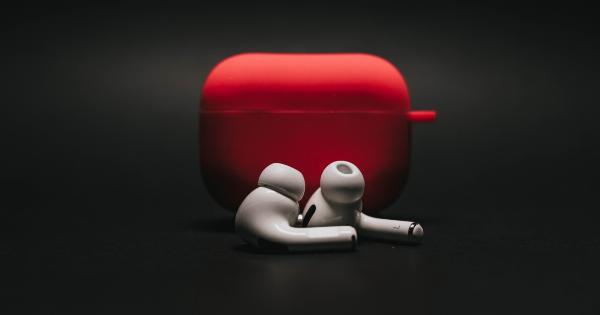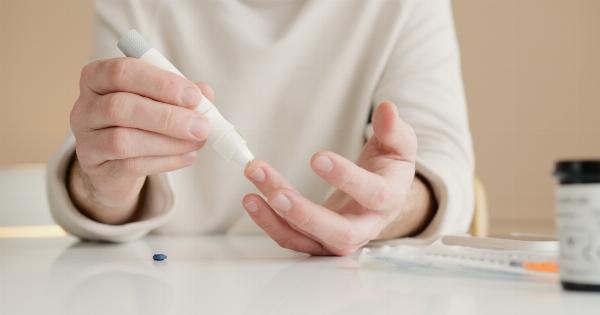Patella chondropathy, also known as patellofemoral pain syndrome, is a common knee condition characterized by pain and discomfort in the front of the knee.
It is often caused by abnormal wear and tear on the cartilage of the patella, the small bone located in front of the knee joint. This condition can significantly impact a person’s quality of life and limit their ability to perform daily activities.
While there are various treatment options available, biologic treatment has emerged as a promising approach for managing patella chondropathy.
Understanding Patella Chondropathy
Before delving into the role of biologic treatment, it is important to understand the underlying mechanisms of patella chondropathy. The patella, or kneecap, is a small bone that sits in front of the knee joint and provides protection to the joint.
It glides along the femur, the thigh bone, during movements such as walking, running, and bending the knee. The patella is covered with a layer of smooth cartilage that allows for smooth movement and reduces friction.
However, factors such as overuse, poor alignment of the patella, muscle imbalances, and trauma can lead to damage of this cartilage, resulting in patella chondropathy.
Patella chondropathy is characterized by symptoms such as pain, swelling, and a grinding or crunching sensation in the knee. These symptoms may worsen with activities that involve bending the knee, such as climbing stairs, squatting, or running.
If left untreated, patella chondropathy can progress and lead to further damage to the cartilage, ultimately resulting in osteoarthritis.
Traditional Treatment Approaches
Traditional treatment approaches for patella chondropathy typically focus on reducing pain and inflammation, improving knee function, and preventing further damage. These approaches may include:.
1. Physical Therapy
Physical therapy plays a crucial role in managing patella chondropathy. It aims to strengthen the muscles around the knee, improve flexibility, correct imbalances, and promote proper alignment of the patella.
Physical therapists may utilize various techniques such as stretching, strengthening exercises, manual therapy, and taping to support and stabilize the knee joint.
2. Non-Steroidal Anti-Inflammatory Drugs (NSAIDs)
NSAIDs, such as ibuprofen, can help alleviate pain and reduce inflammation associated with patella chondropathy.
However, long-term use of NSAIDs may have side effects and is not recommended for everyone, especially those with underlying health conditions.
3. Knee Bracing
Knee braces can provide support and relieve pressure on the patella. They help maintain proper alignment and reduce stress on the knee joint during activities.
Different types of braces, such as patellar stabilizing braces or unloading braces, may be recommended based on the individual’s specific needs.
4. Activity Modification
Modifying or avoiding activities that worsen the symptoms can help prevent further damage to the patella.
This may involve reducing high-impact activities or incorporating low-impact alternatives, such as swimming or cycling, which are easier on the knee joint.
5. Steroid Injections
Steroid injections directly into the knee joint can help reduce pain and inflammation in cases where conservative measures have not provided sufficient relief.
However, the effects of steroid injections are temporary, and long-term use can lead to cartilage damage.
The Role of Biologic Treatment
Biologic treatment, also known as regenerative medicine, focuses on harnessing the body’s natural healing processes to repair damaged tissues. It offers a promising alternative to traditional treatment approaches for patella chondropathy.
Biologic treatments used in managing patella chondropathy include:.
1. Platelet-Rich Plasma (PRP) Therapy
PRP therapy involves extracting a small amount of the patient’s blood and processing it to separate the platelet-rich plasma. Platelets contain growth factors that stimulate tissue repair and regeneration.
The platelet-rich plasma is then injected into the damaged area of the patella, promoting the healing process. PRP therapy has shown promising results in reducing pain and improving function in patients with patella chondropathy.
2. Stem Cell Therapy
Stem cell therapy utilizes the regenerative potential of stem cells to repair damaged tissues. Stem cells can differentiate into various cell types, including cartilage cells.
In the context of patella chondropathy, stem cell therapy involves injecting stem cells into the damaged area to promote cartilage regeneration and repair. Current research on stem cell therapy for patella chondropathy is still in its early stages, but initial results are encouraging.
3. Growth Factor Injections
Growth factors play a crucial role in tissue healing and regeneration.
Injections of specific growth factors, such as insulin-like growth factor (IGF-1) or transforming growth factor-beta (TGF-β), can be used to stimulate the repair of damaged cartilage in patella chondropathy. These injections can be combined with other biologic treatments for enhanced therapeutic effects.
4. Extracorporeal Shockwave Therapy (ESWT)
ESWT is a non-invasive treatment technique that uses high-energy shockwaves to stimulate tissue healing. It has been used in various musculoskeletal conditions, including patella chondropathy.
ESWT promotes cell growth, angiogenesis (formation of new blood vessels), and the release of natural pain-relieving substances, leading to improved tissue repair and pain reduction.
5. Prolotherapy
Prolotherapy involves injecting a solution, such as a dextrose solution or platelet-rich plasma, into the damaged area to stimulate tissue repair and strengthen ligaments and tendons.
In the context of patella chondropathy, prolotherapy can help stabilize the patella and reduce pain by promoting the growth of healthy cartilage.
Conclusion
Patella chondropathy can significantly impact an individual’s quality of life and restrict their daily activities.
While traditional treatment approaches focus on pain management and symptom relief, biologic treatments offer a promising alternative by promoting tissue repair and regeneration. Platelet-rich plasma therapy, stem cell therapy, growth factor injections, extracorporeal shockwave therapy, and prolotherapy are among the biologic treatments being explored for managing patella chondropathy.
These treatments aim to address the underlying cause of the condition and promote long-term healing. Further research is needed to establish their efficacy and long-term effects. Nonetheless, biologic treatment holds great potential in revolutionizing the management of patella chondropathy and improving patients’ outcomes.



























